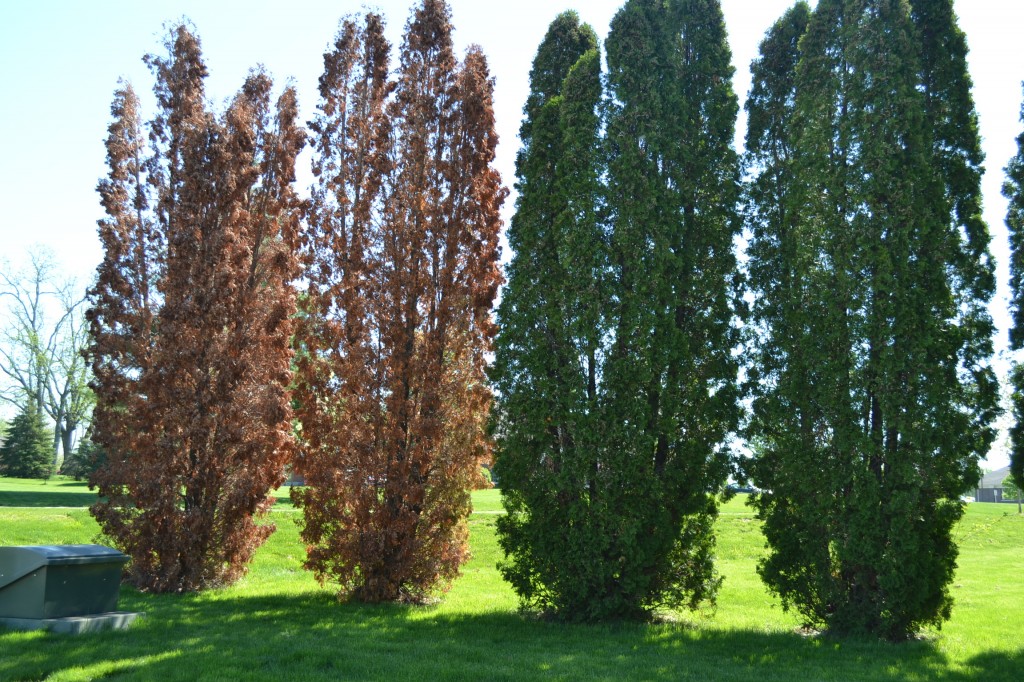If your landscape is riddled with dying arborvitae plants, there are several things that may be causing the die back. If you have mature arborvitae plants, there is usually only a hand full of things that cause dying. Dying arborvitae can be caused by lack of moisture. If you are experiencing extreme drought conditions, it is probably time to start watering your plants. Watering amounts depend on the size of the plant, the age of the plant and soil conditions. If you are watering plants that normally do not get regular watering, make sure to evaluate the soil conditions. If you have heavy clay soil, your plant may be struggling to root out. If you did not amend the soil when you installed your plant, you could have created a bowl for the plant to sit in. On a normal year when additional watering is not required, you may not notice a problem. Water will fill the bowl, be absorbed by the plant or evaporate. When you add in additional watering, you may be supplying more water than the plant needs. Too much water will sit in the bowl and may suffocate the plant.
Dying Arborvitae can be caused by the following:
Spruce Spider Mites can be an occasional pest of arborvitae. Spider mites are very small and are not readily visible to the naked eye. Spider mites have mouth parts that suck up sap. The damage on this foliage turns to yellow or brown in color. When there is a significant out break of spider mites, webbing may be noticed.
Damaged or disrupted soil can also cause dying arborvitae. If you disturb the established root system of the arborvitae, you risk killing the plant. Any major soil disruption will cause you to have to water the plant. You may have to treat the plant like a newly installed plant, depending on the extent of the disruption.

